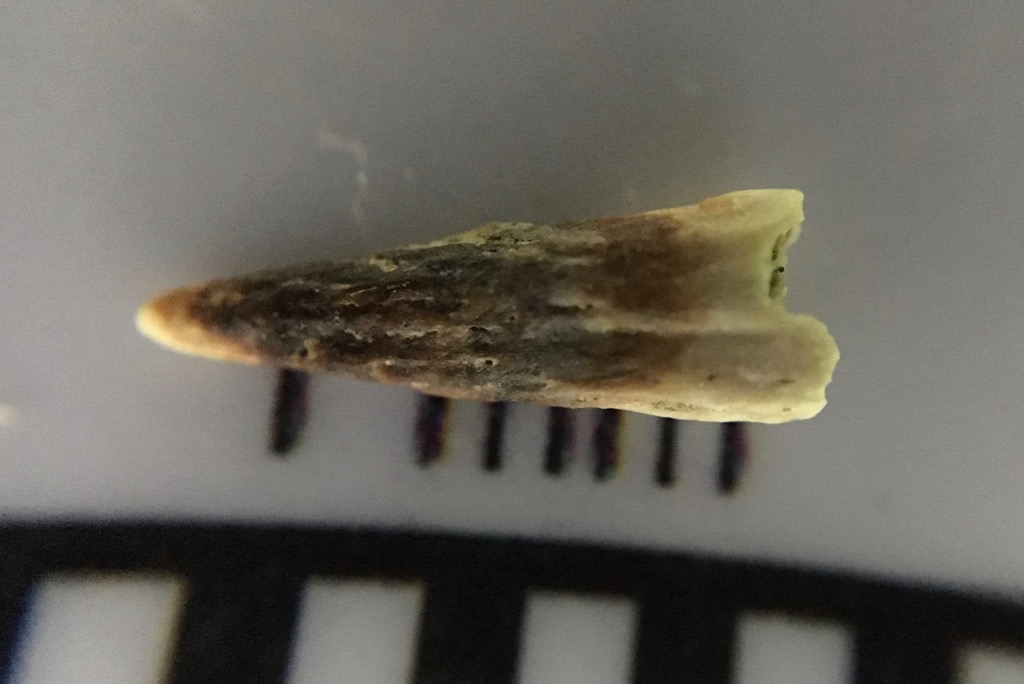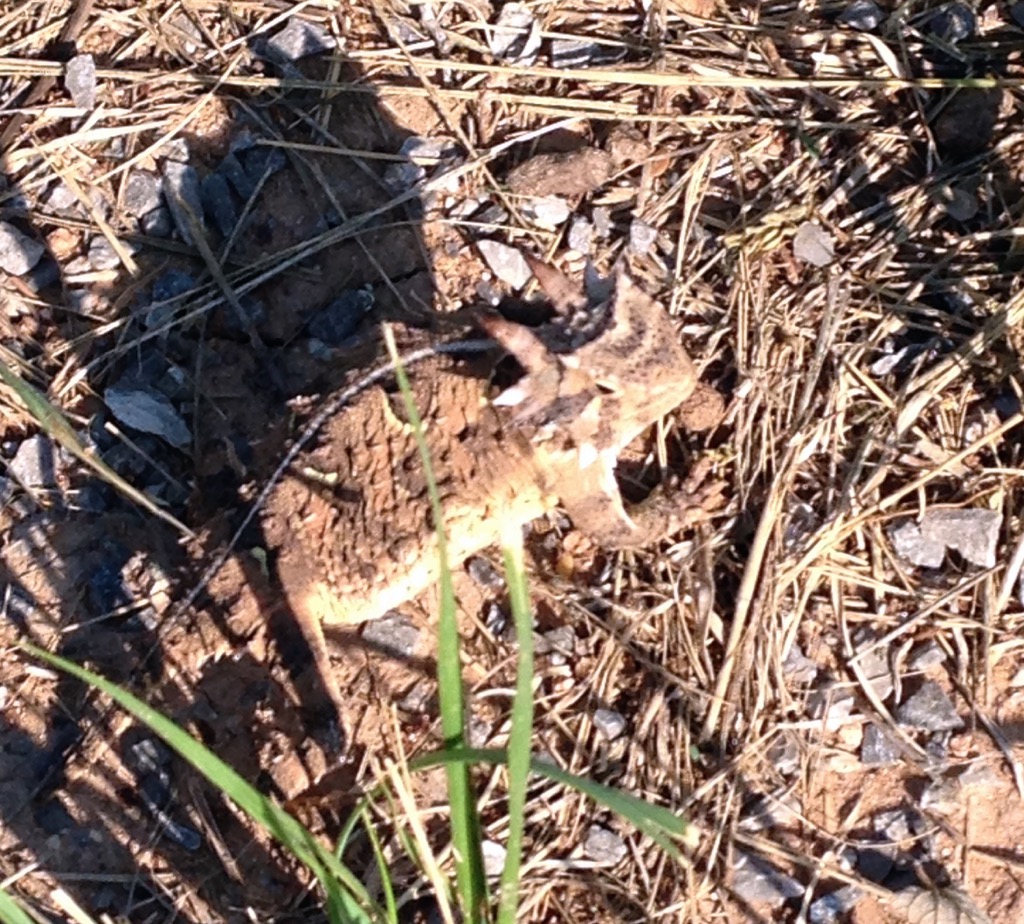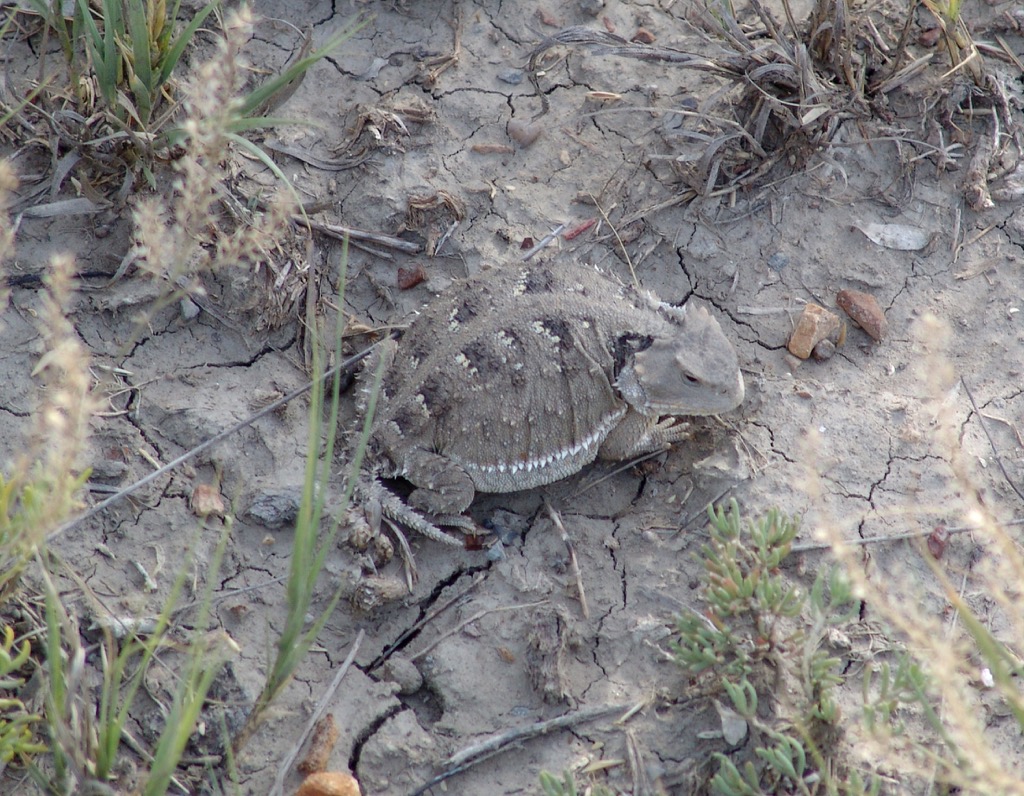 One of the things I find most intriguing about the Pleistocene is how, in spite of the impressive megafauna, it was so similar to the modern world. As I've mentioned in other posts, as with many other Pleistocene sites the fauna at Diamond Valley Lake is in many ways a lot like what we see in southern California today.The tiny fossil shown above (that's a millimeter scale) may look like a tooth at first glance. But the pitted texture is a giveaway that this is a bone, not a tooth. This is a horn from a horned lizard of the genus Phrynosoma, specifically one of the horns that projects from the parietal bone in the skull, visible below in this specimen of Phrynosoma cornutum that Brett photographed in Texas:
One of the things I find most intriguing about the Pleistocene is how, in spite of the impressive megafauna, it was so similar to the modern world. As I've mentioned in other posts, as with many other Pleistocene sites the fauna at Diamond Valley Lake is in many ways a lot like what we see in southern California today.The tiny fossil shown above (that's a millimeter scale) may look like a tooth at first glance. But the pitted texture is a giveaway that this is a bone, not a tooth. This is a horn from a horned lizard of the genus Phrynosoma, specifically one of the horns that projects from the parietal bone in the skull, visible below in this specimen of Phrynosoma cornutum that Brett photographed in Texas: There are a number of different species of horned lizards that are each endemic to different parts of North America, and one of the ways they differ is in the size and shape of their horns. Compare the horns on the Texas lizard above to those on Phyrnosoma douglasii from South Dakota:
There are a number of different species of horned lizards that are each endemic to different parts of North America, and one of the ways they differ is in the size and shape of their horns. Compare the horns on the Texas lizard above to those on Phyrnosoma douglasii from South Dakota: The southern California horned lizard species is Phrynosoma coronatum, which I've never had the opportunity to photograph in the wild. Its skull, however, is somewhat similar to the Texas species with large parietal horns, as can be seen in this comparison image.Horned lizards live in relatively arid areas, which seems to be a common theme with the small Pleistocene animals found at Diamond Valley Lake. They are specialist predators of ants, especially harvester ants, so the presence of Phyrnosoma at Diamond Valley Lake implies the presence of ants there as well, even though they have not been found as fossils in those deposits.
The southern California horned lizard species is Phrynosoma coronatum, which I've never had the opportunity to photograph in the wild. Its skull, however, is somewhat similar to the Texas species with large parietal horns, as can be seen in this comparison image.Horned lizards live in relatively arid areas, which seems to be a common theme with the small Pleistocene animals found at Diamond Valley Lake. They are specialist predators of ants, especially harvester ants, so the presence of Phyrnosoma at Diamond Valley Lake implies the presence of ants there as well, even though they have not been found as fossils in those deposits.
